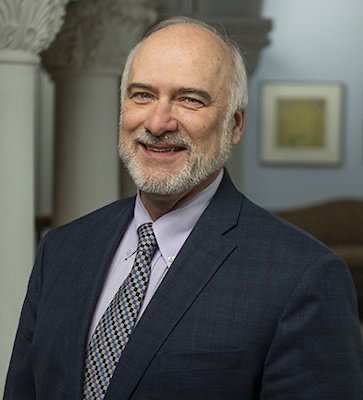Larkin Songs (2001)
Song Cycle for Voice and Piano
Duration: 24’
Movement Titles: Going | Coming | Interlude #1: Fiction and the Reading Public | Counting | 'None of the books have time' | 'Within the dream you said' | Talking in Bed | Interlude #2: 'To write one song, you said' | 'Morning at last: there is snow' | The White Palace
Text: Philip Larkin (E)
First Performance: 18 February 2001 / Ham Fine Arts, Las Vegas, Nevada / Paul Kreider, baritone / Daron Hagen, piano
Dedication: "Commissioned by the University of Nevada Las Vegas for Paul Kreider, 2001.”
Publisher: Carl Fischer
Program Note:
"Daron Hagen is clearly in love with art songs. Since his teenage years, he has composed over 300 of them, and the form remains a central focus of his musical output. Hallmarks of Hagen's unique personal style are a consistently elegant sense of craftsmanship, freshness, and clarity. Hagen says his songs require singers of particular skills: '[those who] respect the text, have excellent diction, and know how to act.' His professional collaboration with Paul Kreider dates from 1992 when they performed selections together from Hagen's opera Shining Brow at the Guggenheim Museum in New York: 'I learned that Paul somehow had a truer, more dead-on sense of exactly what I was after when I notated my vocal music than anyone with whom I had ever worked.' Hagen has since written songs and operatic roles for Kreider's voice.
For this cycle, Hagen chose ten texts by British poet Philip Larkin (1922-1985) whose provocative verse he describes as being like 'like sherry, as opposed to wine.' The songs are ordered by the poems' chronology — from the late 1920's to the 1970's. As Larkin grows older, the poems take on a sense of isolation. Larkin's poetry, which fills one slim volume, has a singsong, chant-like quality about it.
A gifted pianist with an unerring sense of prosody, Hagen proves to be eloquent in setting Larkin to music. Larkin Songs is a haunting and intensely emotional collection in which words and music blend in sensitive, graceful phrases. Hagen classifies it as a song cycle: 'It is unified by the recurring use of piano figures in a rather exposed linear texture. This is matched by a similar quality in the vocal writing.' Hagen's delicate piano patterns, etched like snow pictures on a frosty window, create an effective and beautiful soundscape for Larkin's pensive verses. Several songs have repeated pedal notes that, like an insistent reminder, perpetuate the poet's lonely memories. The vocal writing is lyric but exposed (Song 4a is unaccompanied). Indeed, Hagen's musical approach creates a sort of close-knit two-person chamber music texture which throws the words into high-relief.
The cycle is overlaid with moods of melancholy and reminiscence. Hagen says: 'The longer that an art song composer can sustain a desired mood, the more exquisite the rendering of context, the more perfect a setting in which the listener can experience the text.'
In recording the Larkin Songs, Hagen was quick to praise the artistic generosity of his collaborator: 'Paul was willing to go where I asked him to — interpretively and musically.' Their collaboration resulted in some changes to the music; in one instance, changing a pitch that Hagen had thought would be easier to sing back to the original, more difficult interval; in another place, creating symmetry by changing the beginning of the song to match the closing measures. Kreider acknowledges Hagen's advice in working with Larkin's poetry, which did not yield easily its secrets easily:' [Daron] was really helpful in getting through the progression of what Larkin was saying in these poems — all Daron's opinions — and very helpful.'
Composer and friend Russell Platt describes Hagen's songs as 'artful simplicity.' The musical and emotional content of Larkin Songs strikes the listener as immediate and very listenable, but it is the direct result of Hagen's striving to remain simple in his musical approach to setting the poems. He believes in using only a few musical ideas to illuminate the text: 'The poem already has a music of its own. It is my duty to find that music and cooperate with that structure and express it melodically and harmonically.'
Hagen notes, 'The best songs have all the elements of opera in them: introduction, love scene, and adieu — compressed into the time it takes to, well, sing them. The best song composers manifest this arc in the sensible physical demands they palce on the singer's instrument, making the song 'feel good' to sing.'
Although he has composed both songs and operas, Hagen is well aware of the different demands of working with both: 'An opera is a mural; an art song is an exquisite miniature, requiring the tiniest of brush strokes.' He deliberately worked to give Larkin Songs a 'simple and youthful' quality: Hagen is quoted as saying, 'I think it's Jean Cocteau who said that it's simple to be hard, but it's hard to be simple. I work hard to be simple.' The Larkin Songs were commissioned by the University of Nevada Las Vegas School of Music for Paul Kreider in 2000. They were first performed at Ham Fine Arts in Las Vegas, Nevada by Paul Kreider, accompanied by the composer, on 18 February 2001."
— Carol Kimball, 2003
Paul Kreider p/c: Brian Persing
